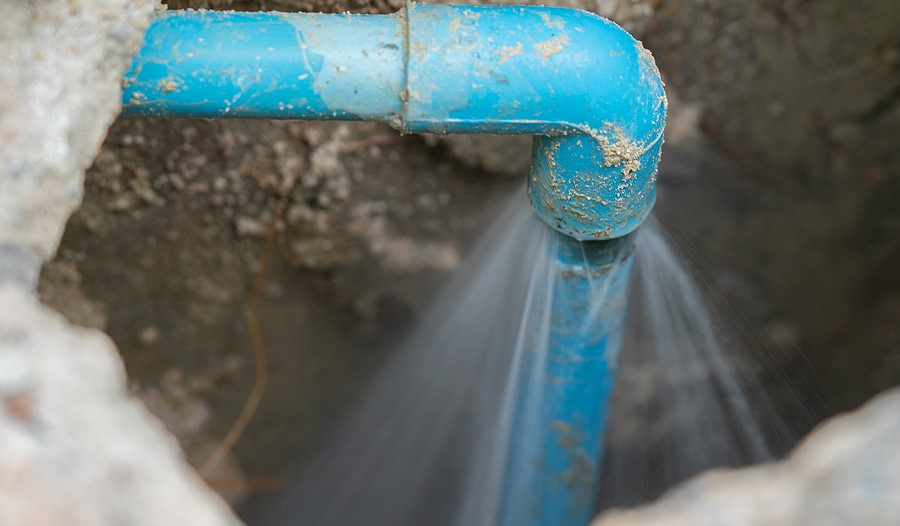News
Thames Water Leakage Rates To Climb Over The Next 2 Years
One of the biggest issues facing the UK in terms of the water crisis is the nation’s leakage rates. Much of the pipe network was built during the Victorian era and, as such, it’s really starting to show its age, unable to withstand the pressure of a growing population and more extreme, more regular weather events like flooding.
Figures from industry watchdog Ofwat show that approximately one-fifth of the water flowing through the pipe network is lost to leaks and it’s expected that water suppliers across England and Wales will work to improve this significantly by finding and repairing leaks, as well as replacing any worn-out pipes.
While progress has been made, with more than 40 per cent of pipes replaced since privatisation of the industry back in 1989, it seems that more must indeed be done and soon, given that Thames Water has just admitted that its leakage rates are actually going to be higher than expected over the next couple of years, driven by a decline in asset health over recent decades.
The company has said that rapid population growth and industrialisation in London during the 19th century meant that the region’s infrastructure is significantly older than elsewhere in the UK, with almost 40 per cent of the network dating back to before the 1920s.
Many of these pipes are also made from cast iron, which is more likely to fail than the plastic pipes that are installed today.
There is a strong correlation between mains failures and pipe age and material type, as well as soil composition, which puts the London network at a relatively higher risk of failures such as water bursts.
As such, Thames Water has just admitted in its revised service commitment plan that it expects to leak 585 million litres of water per day over the course of this financial year, up from the 500 million litres that was previously forecast.
It also expects that it will leak between 512 million and 530 million litres per day over the next financial year as well, a rise on the 507 million that it had originally predicted.
To help tackle the issue, the company has published a prioritised three-year turnaround plan that covers asset maintenance to help prevent further deterioration of the network, as well as performance improvements in key areas like leaks and pollution while maintaining other metrics such as supply interruptions and water quality.
Water leaks
Thames Water’s aim is to ensure sustainable leakage reduction by deepening its understanding of water usage and consumption, targeting detection activities, prioritising repairs and making field operations more efficient.
There have been various pilot projects taking place in London to tackle leakage rates, but these adopted a trial and error approach. The new strategy will see continued rollout of the leakage transformation plan this year, but an additional team will also be set up to improve end-to-end processes and field efficiency.
Ultimately, this all means that Thames Water will need to make more significant investments in infrastructure to ensure that core services continue to be provided, with more money spent on mitigating emerging risks and fulfilling regulatory requirements.
In 2022/2023, £1.8 billion was invested in the network and over the next two years an additional £200 million will be provided to replace water mains and cut down leaks.
It is worth noting that Thames Water’s updated leakage figures are an improvement on those seen in the 2022/23 financial year, when 620 million litres of water was lost to leakage each day but the scale of the challenge is still significant and this needs to be reflected in the company’s long-term plans for the future.
As the pressures of climate change make themselves felt more and more as time goes on, it’s vital that infrastructure resilience becomes a top priority. Coupled with population growth, a huge amount of pressure will be put on an ailing system and more leaks are likely to be seen unless urgent action is taken.
General improvements
According to Ofwat, leakage rates across England and Wales are at their lowest levels ever, with the majority of companies hitting their set targets.
The sector has been challenged to reduce water leaks by a minimum of 16 per cent in the five years leading up to 2025, with suppliers also committing to reducing leaks by 50 per cent from a 2017/2018 baseline by 2050.
In 2022, water companies in England published its leakage route map, outlining how the sector intends to reduce leakage significantly by 2050, with action including improved quantification of both background leakage levels and customer side leakage, as well as developing a sector-wide code of practice for laying mains pipes without leaks and a strategy to tackle customer supply pipe leaks.
With climate change exacerbating the global water crisis and putting increasing amounts of pressure on already dwindling supplies, focusing on leakage will only become more and more important.
As such, Ofwat plans to push companies to go even further with leak reduction and is considering setting yearly leakage targets for each firm for the next five-year period (2025-2029).
But, of course, businesses and individuals alike also have responsibilities when it comes to preventing water wastage and you can help ensure your company isn’t contributing to leakage rates by having a water audit carried out across your site.
Once you know how and where you use water, you can identify any weak or vulnerable areas and prioritise repairs as and when appropriate. If you’d like to find out more, get in touch with the H2o Building Services team today.
